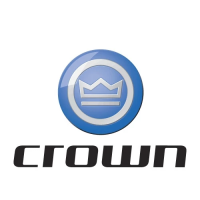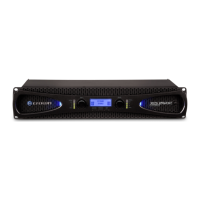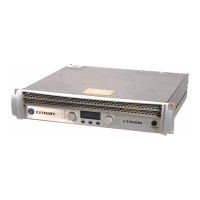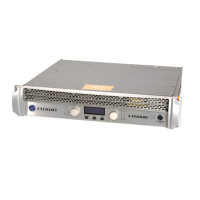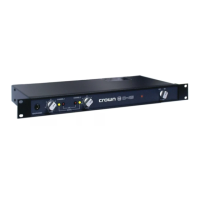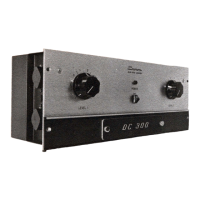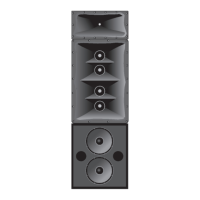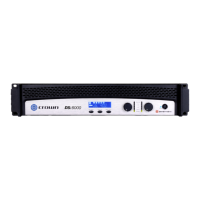Operation Manual
I-Tech HD DriveCore Series Power Ampliers
page 14
6.2 Startup Procedure
When first turning on your amplifier, follow the procedures in the
Quick-Start Guide on page 4 (stereo) or page 5 (bridge-mono).
If you ever need to make any wiring or installation changes, don’t for get
to disconnect the power cord.
For help with determining your system’s optimum gain structure
(sig nal levels) please refer to the Crown Amplifier Application Guide,
available online at www.crownaudio.com.
6.3 Precautions
Your amplifier is protected from internal and external faults, but you
should still take the following precautions for optimum performance
and safety:
1. Before use, your amplifier first must be configured for proper
operation, including input and output wiring hookup. Improper
wiring can result in serious operating difficulties. For information
on wiring and configuration, please consult the Setup section of
this manual or, for advanced setup techniques, consult Crown’s
Amplifier Application Guide available online at
www.crownaudio.com.
6 Operation
6.1 Protecting Your Speakers
It’s wise to avoid clipping amplifier signals at the input and output. Not
only does clipping sound bad, it can damage loudspeakers. To prevent
clipping, use System Architect software’s Level Max suite to enable or
display the peak voltage limiter and average power limiter in your
amplifier’s built-in DSP. That way, no matter how strong a signal your
mixer produces, the amplifier output will not clip. Set the limiter
threshold so that at full level no components in the audio signal chain
are clipping, the amplifier input and output is not clipping, and the
attached loudspeakers at properly protected according to the mnfg’s
rec’d specifications.
Also, avoid sending strong subsonic signals to the amplifier. High-
level, low-frequency signals from breath pops or dropped micro-
phones can blow out drivers. To prevent subsonic signals, use one of
these methods:
• Insert a highpass lter between mixer output and amplier input (or
between mixer and limiter).
• Use the I-Tech’s onboard DSP to set up a highpass lters.
• Switch in highpass lters at your mixer. Set the lter to as high a
fre quency as possible that does not affect your program. For example,
try 35 Hz for music and 75 Hz for speech. On each mixer input channel,
set the filter frequency just below the lowest fundamental frequency of
that channel’s instrument.
• Note: An amplier reproduces the signal present on the input.
Therefore, if you send clipped or squared wave signals to the input, it
will recreate this on the output possibly damaging your loudspeakers.
2. Use care when making connections, selecting signal sources and
controlling the output level. The load you save may be your own!
3. Do not short the ground lead of an output cable to the input signal
ground. This may form a ground loop and cause oscillations.
4. WARNING: Never connect the output to a power supply,
battery or power main. Electrical shock may result.
5. Tampering with the circuitry, or making unauthorized circuit
changes may be hazardous and invalidates all agency listings.
6. Do not operate the amplifier with the red Clip LEDs constantly
flashing.
7. Do not overdrive the mixer, which will cause clipped signal to be
sent to the amplifier. Such signals will be reproduced with extreme
accuracy, and loudspeaker damage may result.
8. Do not operate the amplifier with less than the rated load
imped ance. Due to the amplifier’s output protection, such a
configura tion may result in premature clipping and speaker
damage.
9. CAUTION – SHOCK HAZARD: Potentially lethal voltages
exist at the output connectors when the amplifier is
turned on and is passing a signal.
Remember: Crown is not liable for damage that results from
overdriv ing other system components.
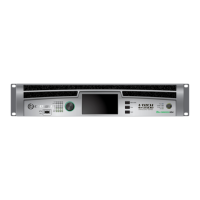
